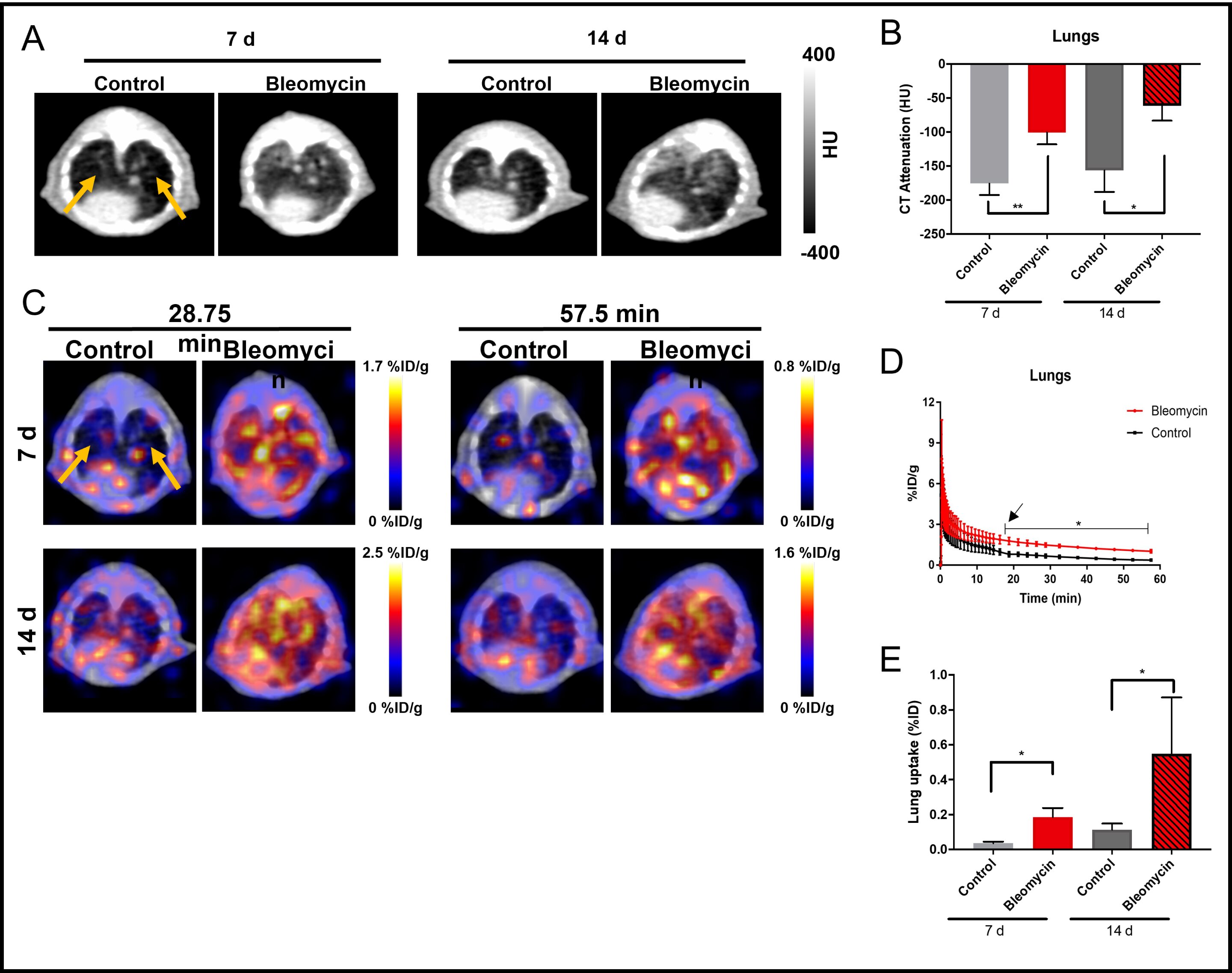#Radiotracer effective for detection and assessment of lung fibrosis

“#Radiotracer effective for detection and assessment of lung fibrosis”

Positron emission tomography (PET) using a 68Ga-labeled fibroblast activation protein inhibitor (FAPI) can noninvasively identify and monitor pulmonary fibrosis, according to research presented at the Society of Nuclear Medicine and Molecular Imaging 2021 Annual Meeting. By binding to activated fibroblasts present in affected lungs, FAPI-PET allows for direct imaging of the disease process.
Idiopathic pulmonary fibrosis (IPF) causes substantial scarring to the lungs, making it difficult for those impacted to breathe. It is a significant cause of morbidity and mortality in the United States, with more than 40,000 deaths annually. A major challenge in diagnosis and treatment of IPF is the lack of a specific diagnostic tool that can noninvasively diagnose and assess disease activity, which is crucial for the management of pulmonary fibrosis patients.
“CT scans can provide physicians with information on anatomic features and other effects of IPF but not its current state of activity. We sought to identify and image a direct noninvasive biomarker for early detection, disease monitoring and accurate assessment of treatment response,” said Carolina de Aguiar Ferreira, Ph.D., a research associate at the University of Wisconsin-Madison in Madison, Wisconsin.
In the study, researchers targeted the fibroblast activation protein (FAP) that is overexpressed in IPF as a potential biomarker. Two groups of mice—one group with induced pulmonary fibrosis and one control group—were scanned with the FAPI-based PET/CT radiotracer 68Ga-FAPI-46 at multiple time points. Compared to the control group, the mice with induced pulmonary fibrosis had a much higher uptake of the radiotracer, allowing researchers to successfully identify and evaluate areas of IPF.
“Further validation of 68Ga-FAPI-46 for the detection and monitoring of pulmonary fibrosis would make this molecular imaging tool the first technique for early, direct, and noninvasive detection of disease. It would also provide an opportunity for molecular imaging to reduce the frequency of lung biopsies, which carry their own inherent risks,” noted Ferreira. “This development will demonstrate that functional imaging can play an invaluable role in evaluation of the disease process.”
Abstract 10. “Targeting Activated Fibroblasts for Non-invasive Detection of Lung Fibrosis,” Carolina Ferreira, Zachary Rosenkrans, Ksenija Bernau, Jeanine Batterton, Christopher Massey, Alan McMillan, Nathan Sandbo, Ali Pirasteh and Reinier Hernandez, University of Wisconsin—Madison, Madison, Wisconsin; and Melissa Moore, Frank Valla and Christopher Drake, Sofie Biosciences, Dulles, Virginia.
New radiotracer offers opportunities for earlier intervention after heart attack
All 2021 SNMMI Annual Meeting abstracts can be found online at jnm.snmjournals.org/content/62/supplement_1
Provided by
Society of Nuclear Medicine and Molecular Imaging
Citation:
Radiotracer effective for detection and assessment of lung fibrosis (2021, June 14)
retrieved 14 June 2021
from https://medicalxpress.com/news/2021-06-radiotracer-effective-lung-fibrosis.html
This document is subject to copyright. Apart from any fair dealing for the purpose of private study or research, no
part may be reproduced without the written permission. The content is provided for information purposes only.
If you liked the article, do not forget to share it with your friends. Follow us on Google News too, click on the star and choose us from your favorites.
For forums sites go to Forum.BuradaBiliyorum.Com
If you want to read more Like this articles, you can visit our Science category.




